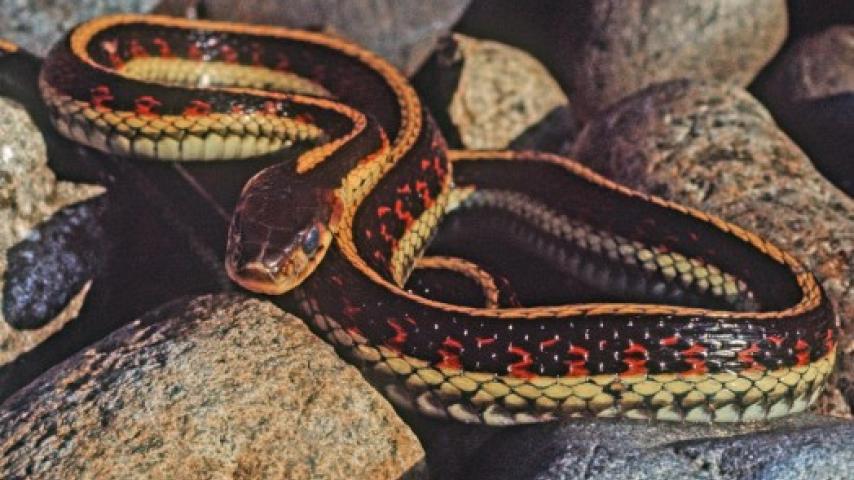Common Garter Snake (Thamnophis sirtalis)
This snake is moderate in size compared with other North American snakes, but it is the largest common species in the Puget Sound region, reaching a meter in length.

KINGDOM Animalia - PHYLUM Chordata - CLASS Reptilia - ORDER Squamata - FAMILY Colubridae
Most individuals are blackish with pale yellow dorsal and lateral stripes, usually with red flecks all along each side. Their color pattern distinguishes them from the other two garter snake species in this area. Males can be distinguished from females by their longer tails, thickened at the base.
The Common Garter Snake has been said to be the best-studied snake in the world. Among other studies, its interaction with the Rough-skinned Newt is perhaps the most interesting. These newts are extremely poisonous, the tetrodotoxin in their body enough to kill anything that tries to eat them (including even large mammals). Some populations of garter snakes have evolved physiological defenses against this toxin and can eat newts freely. Other populations cannot. This is said to be an “arms race” between predator and prey, the prey evolving defenses and the predator evolving mechanisms of countering them.
Common Garter Snakes eat primarily amphibians, but a great range of other prey has been recorded, from earthworms and fish to voles. They spend much time in and around water hunting for their preferred prey, even in the intertidal zone in some areas, where they poke around in tide pools for gobies and sculpins.
Garter snakes become dormant during the low temperatures of winter, then emerge from winter hiding places on the first warm days of early spring. Males immediately start hunting for females, which they can track chemically, and attempt to breed. The thick base of the male’s tail holds the hemipenes, paired copulatory structures that can be everted (turned inside-out like the fingers of a glove) when in use. The young develop within the female’s body and are born live in late summer and fall. Most litters involve 10-20 individuals, larger females with more young.